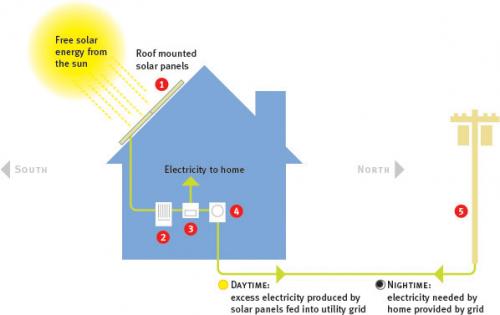How Solar Works

Solar photovoltaic (PV) or electric power systems convert sunlight directly into electricity. When direct sunlight hits the semiconductor material in a solar module, electrons are freed and create an electric current.
A residential solar power system enables a residential homeowner or commercial business owner to generate some or all of their daily electrical energy demand. When a solar system is installed, it is connected to the local utility so that excess power (generated by the solar panels) can be fed into the utility grid, and any power needed above and beyond what the solar system can produce, is drawn from the utility grid.
Solar panels are typically mounted on the roof of a house or commercial facility, or else ground mounted in a garden or piece of land close to the site.
The key components of a solar electric system are as follows:
-
Solar Modules: Solar modules convert sunlight to electrical power. They are typically mounted in a steel frame which in turn is attached to the roof of a home or commercial property or ground mounted on a piece of land close to the site.
-
Inverter: Power produced by the solar modules is sent to a device called an inverter (or power converter) which converts the direct current (DC) to alternating current (AC). Alternating current is the same type of electrical power supplied to homes and businesses from the utility grid.
-
Electrical Panel: Power travels from the inverter to the breaker box or electrical service panel. The power from the electrical panel is then distributed throughout the home or business for use.
-
Utility Meter: When excess power is produced by the solar system (for instance during a work day at a residence or over the weend at a business), the electrical power will flow into the grid through the electric meter. This will cause the meter to effectively run backwards, generating a credit with the utility company which will offset future usage. The arrangement which enables this is known as net metering and is usually mandated by State level electricity policy.
-
Utility Grid: The utility grid is the state and national infrastructure that links homes and businesses to electricity generating assets. The grid automatically provides electricity when household or business demand exceeds solar production.
Now check out: Installation Steps
